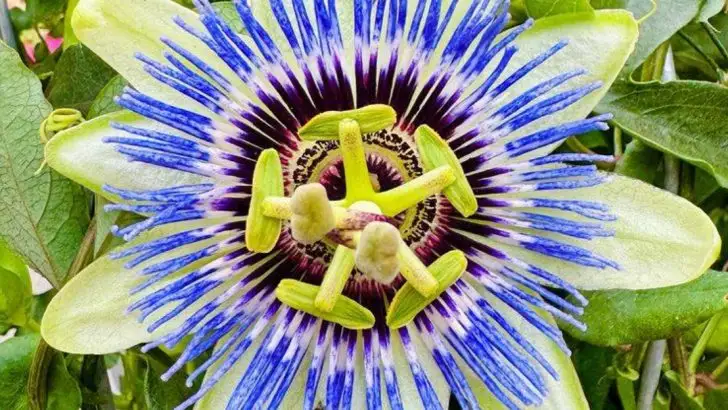Not all flowers play by the rules of all-day beauty. Some of the most enchanting blooms live fast and fade quickly — opening for just a few fleeting hours before closing up or wilting entirely. And yet, gardeners across the world go out of their way to grow them.
Why? Because for those who catch them at just the right moment, these brief blossoms offer a kind of magic no other flower can match. Their rarity makes them unforgettable. Their timing feels like a secret. Some bloom only at night, others only in the morning, and a few vanish before noon.
In this list, you’ll meet 15 incredibly short-lived flowers that prove you don’t need to bloom for long to leave a lasting impression. From ancient symbols to garden showstoppers, these momentary marvels are worth planning your day around.
Queen of the Night
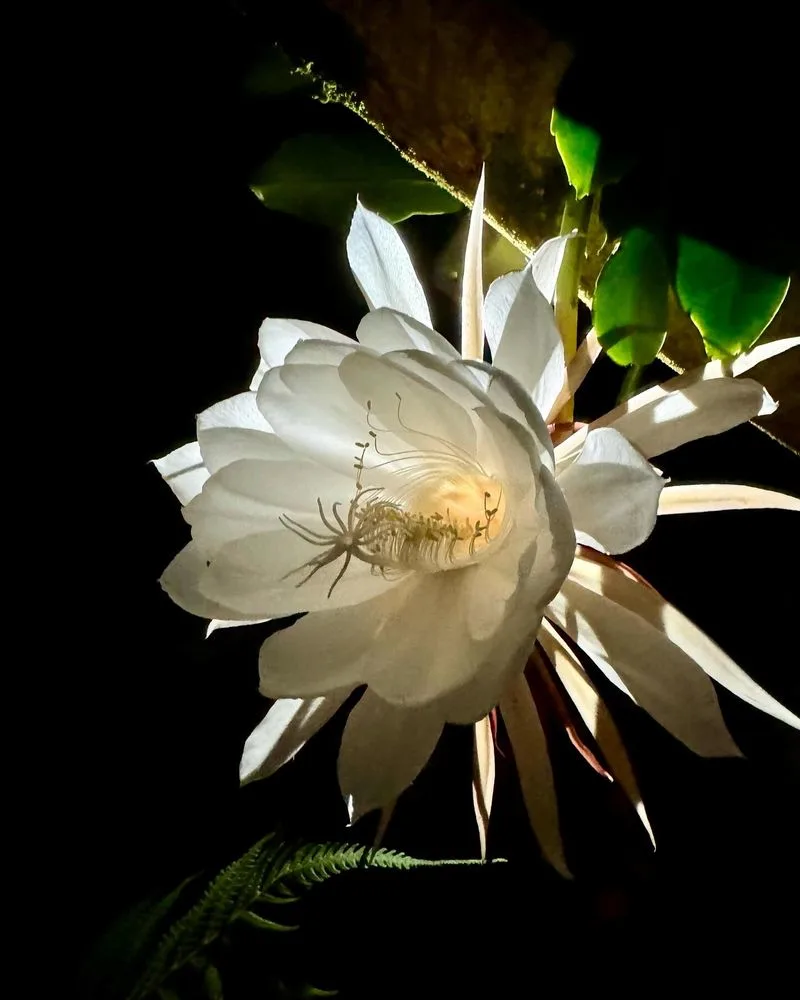
Imagine a flower that blooms in the dark of night, offering its beauty to the moon and stars before dawn. The Queen of the Night, or Selenicereus grandiflorus, does just that. This cactus species unfurls its fragrant, large white flowers only once a year, captivating those lucky enough to witness its brief midnight appearance. Gardeners will appreciate its rarity and the enchantment of its nighttime display. Legend has it, this beauty symbolizes fleeting love, making its short-lived bloom all the more poignant. A sight to behold, its ethereal presence under the moonlight is nothing short of magical.
Morning Glory
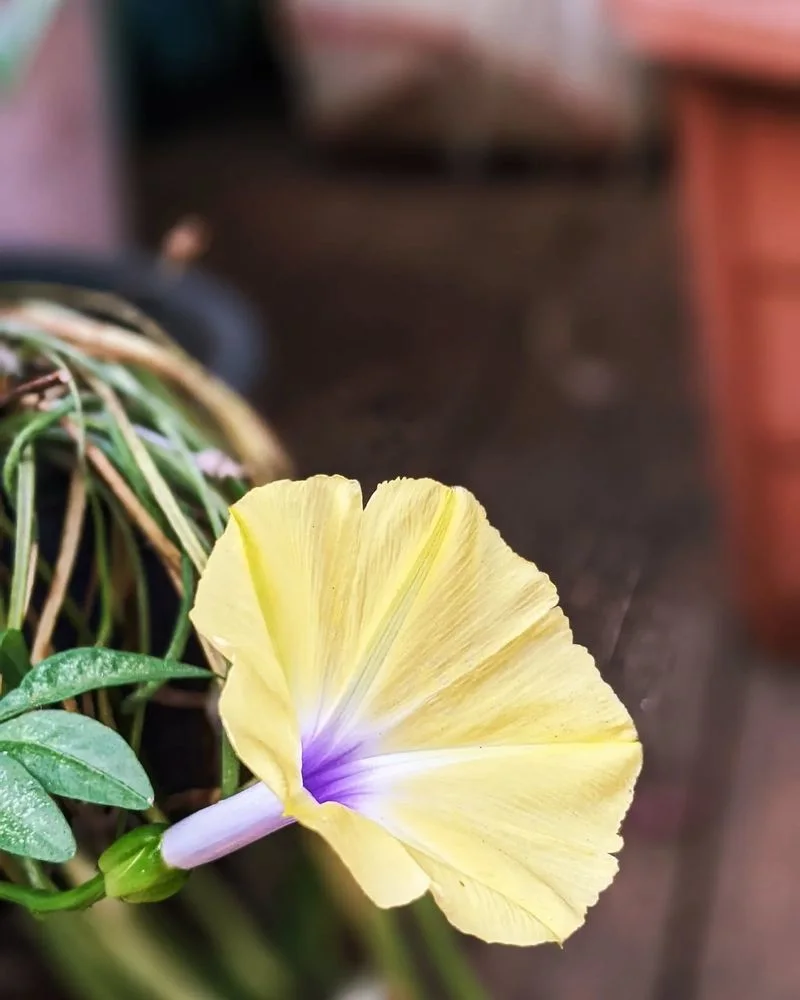
Starting with dawn, Morning Glories unfurl their vivid blooms in anticipation of the sun. These climbing vines, known for their striking blue, purple, and pink flowers, are a gardener’s delight. By midday, their petals begin to close, preserving energy for the next day’s show. Ideal for trellises and fences, they transform any garden into a morning paradise. With a history rooted in ancient Mesoamerican tradition, these flowers were once used in rituals. Their name perfectly encapsulates their nature—glorious in the morning, a gentle reminder of the day’s fleeting beauty.
Four O’Clock Flower
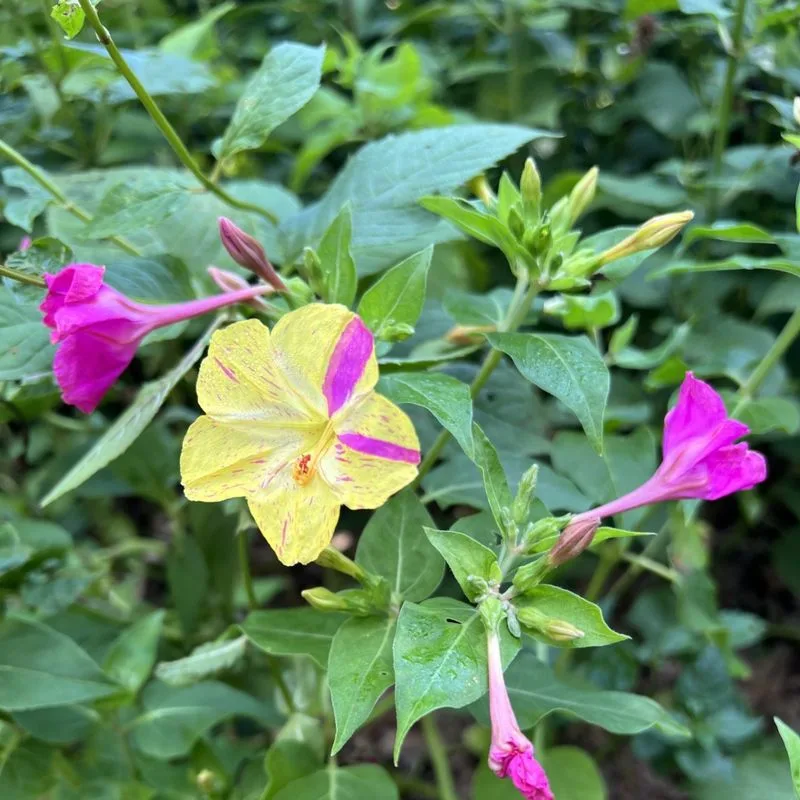
Named for its afternoon bloom time, the Four O’Clock flower, or Mirabilis jalapa, adds a splash of color when most others rest. Blossoms unfurl in vibrant shades of pink, yellow, and white, releasing a sweet fragrance into the evening air. Originating from the Andes, these flowers adapt well to various climates. Their ability to open late in the day makes them perfect for evening gatherings. Historically used for dye, they add both beauty and function to gardens. The surprise of their sudden bloom delights gardeners and passersby alike.
Evening Primrose
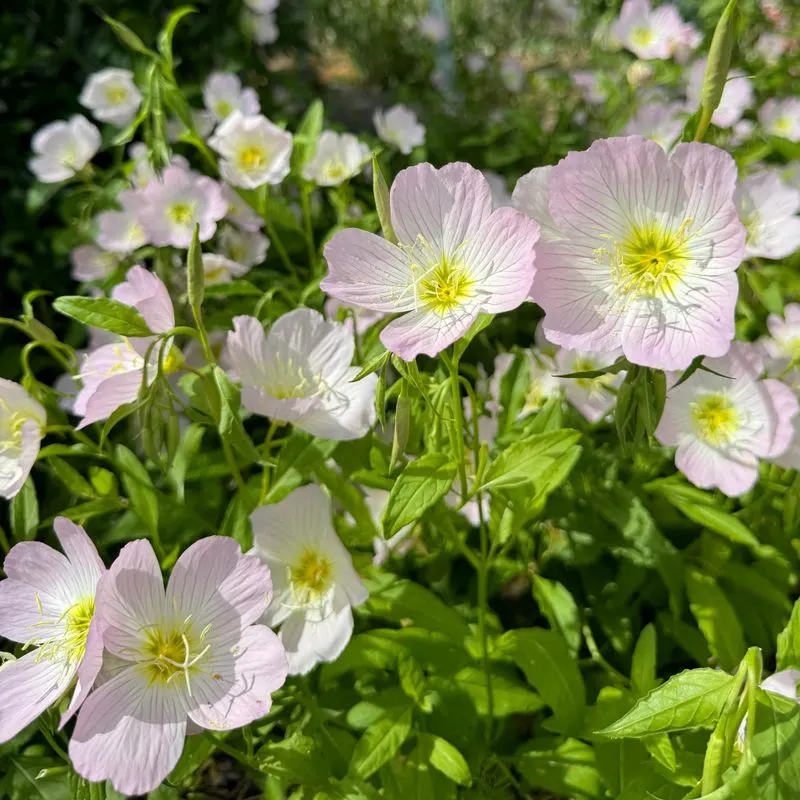
As the sun sets, the Evening Primrose opens its delicate yellow petals to welcome the night. This nocturnal flower attracts nighttime pollinators with its soft glow and gentle fragrance. Found in meadows and gardens alike, it serves as a beacon for moths and other creatures of the dark. Native to North America, the plant has medicinal uses, making it both beautiful and functional. Its transformation from bud to bloom as darkness falls is a captivating sight, offering an understated elegance to any landscape.
Daylily
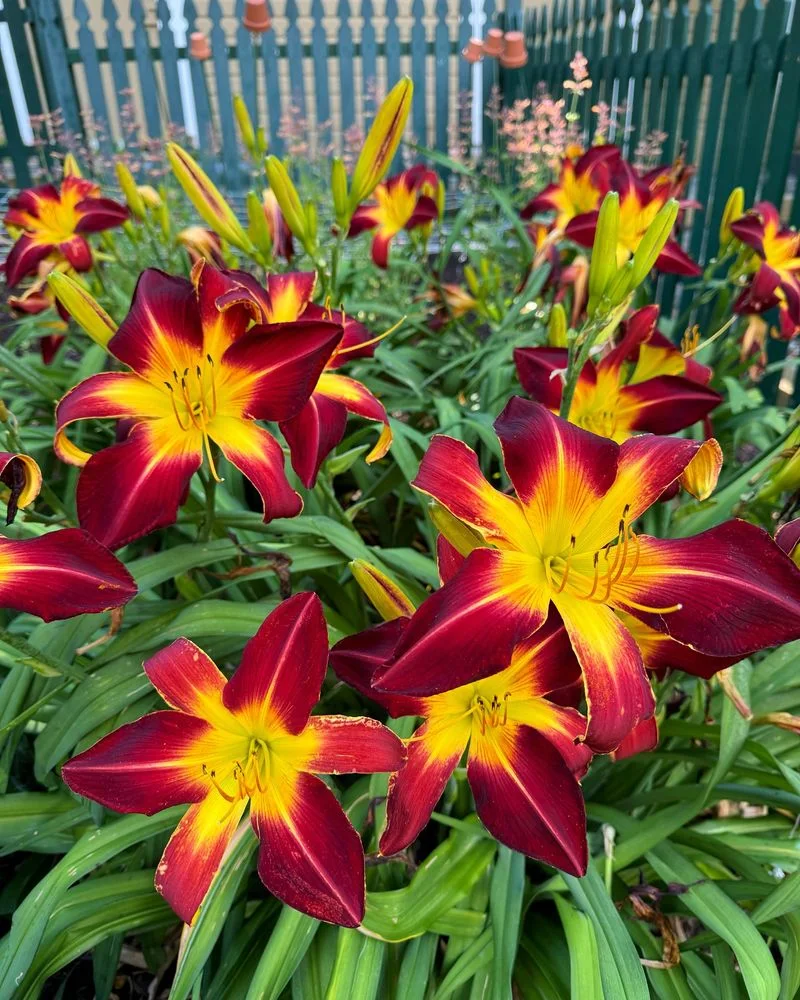
Daylilies, known scientifically as Hemerocallis, are aptly named for their one-day bloom cycle. These hardy perennials grace gardens with their vibrant colors from sunrise to sunset. Each flower lasts just a day, but the plant produces multiple buds, ensuring a continuous display. Garden enthusiasts appreciate their low maintenance and adaptability to various soils. Originating from Asia, they have been cultivated for centuries for both ornament and cooking. Their ability to thrive with minimal care makes them a favorite among busy gardeners.
Bee Orchid
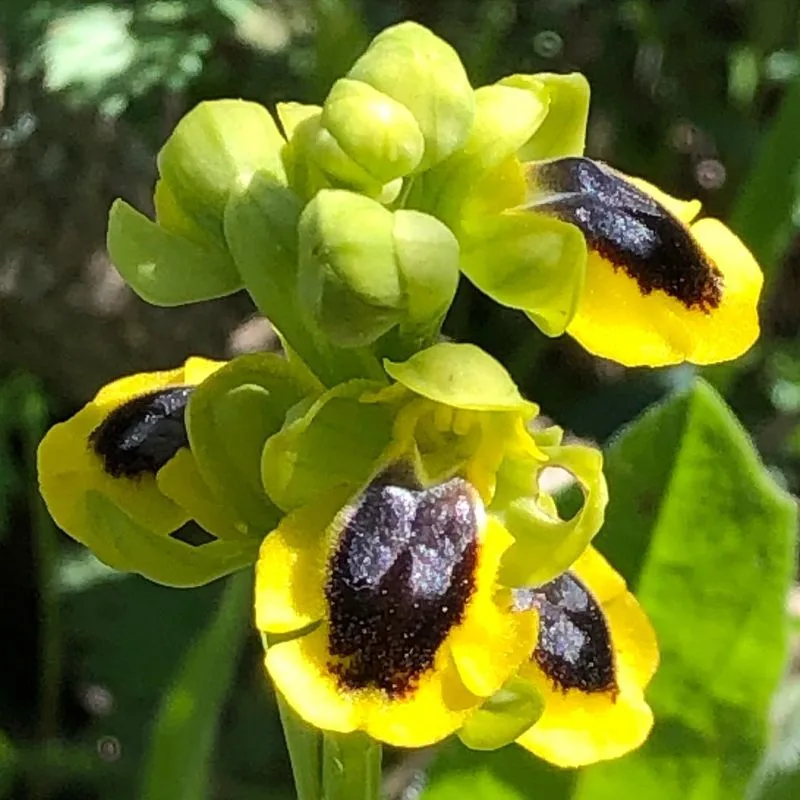
Nature’s mimicry at its finest, the Bee Orchid’s flower resembles a fuzzy bee to attract real bees. Found across Europe, these orchids open for a short period, relying on their unique appearance for pollination. Their striking resemblance to insects is not just a visual trick but part of their survival strategy. These flowers are a testament to nature’s creativity, showcasing evolution’s handiwork. For plant lovers, spotting a Bee Orchid in its natural habitat is a rewarding experience, adding a touch of whimsy to the wildflower landscape.
Chocolate Cosmos
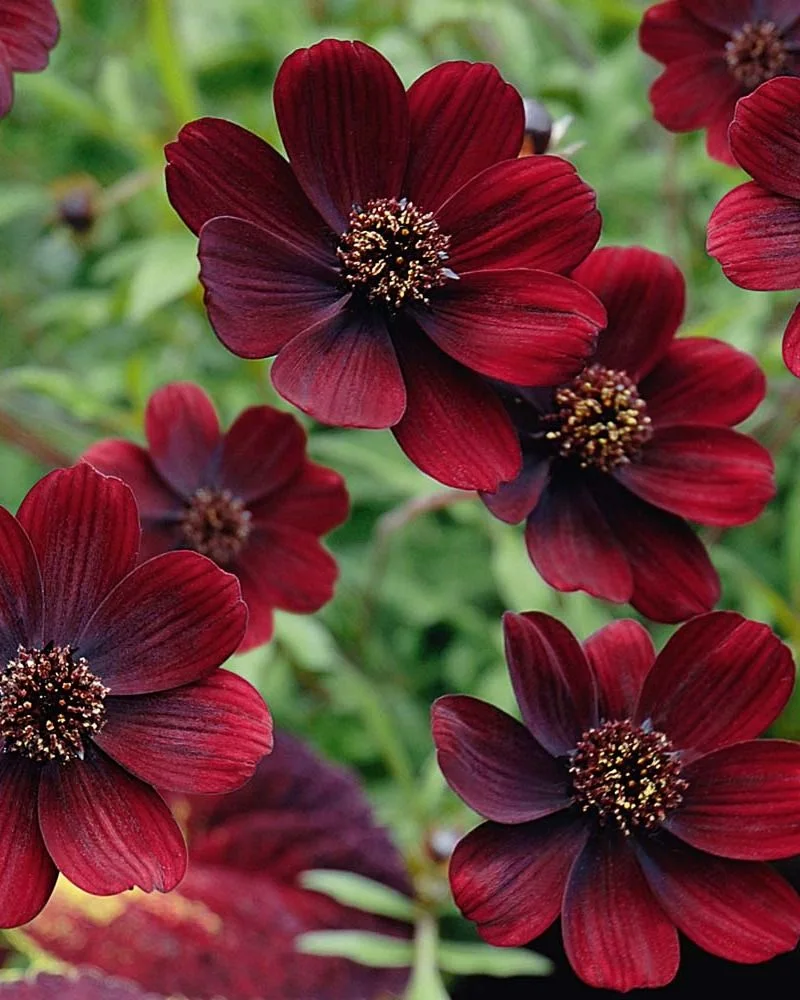
Chocolate Cosmos, aptly named for its chocolate scent, offers a sensory delight with its dark maroon blooms. Native to Mexico, these flowers open in the afternoon, releasing their fragrance to attract pollinators. Though extinct in the wild, they captivate gardeners worldwide with their unique aroma and striking color. Propagating through tubers, they can be a challenge but are rewarding for those dedicated to preserving rare species. Their sensual scent and deep hue make them a coveted addition to any flower collection.
Ghost Orchid
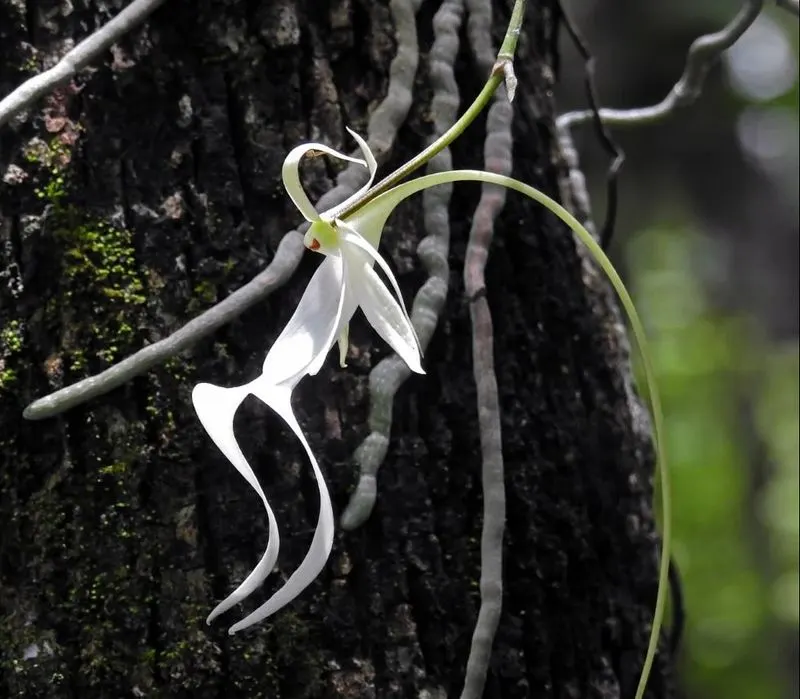
Hidden deep within the swamps of Florida, the Ghost Orchid’s elusive presence captivates those fortunate enough to witness its bloom. This ethereal flower appears as if floating in mid-air, with no leaves to anchor it. Its delicate white petals resemble a ghostly apparition, lasting only a single day.
The Ghost Orchid’s pollination depends on the rare Giant Sphinx Moth, making its survival a delicate balance of ecological factors. Conservationists are keenly interested in this flower due to its dwindling numbers.
A symbol of mystery and fragility, the Ghost Orchid enchants with its spectral beauty.
Corpse Flower
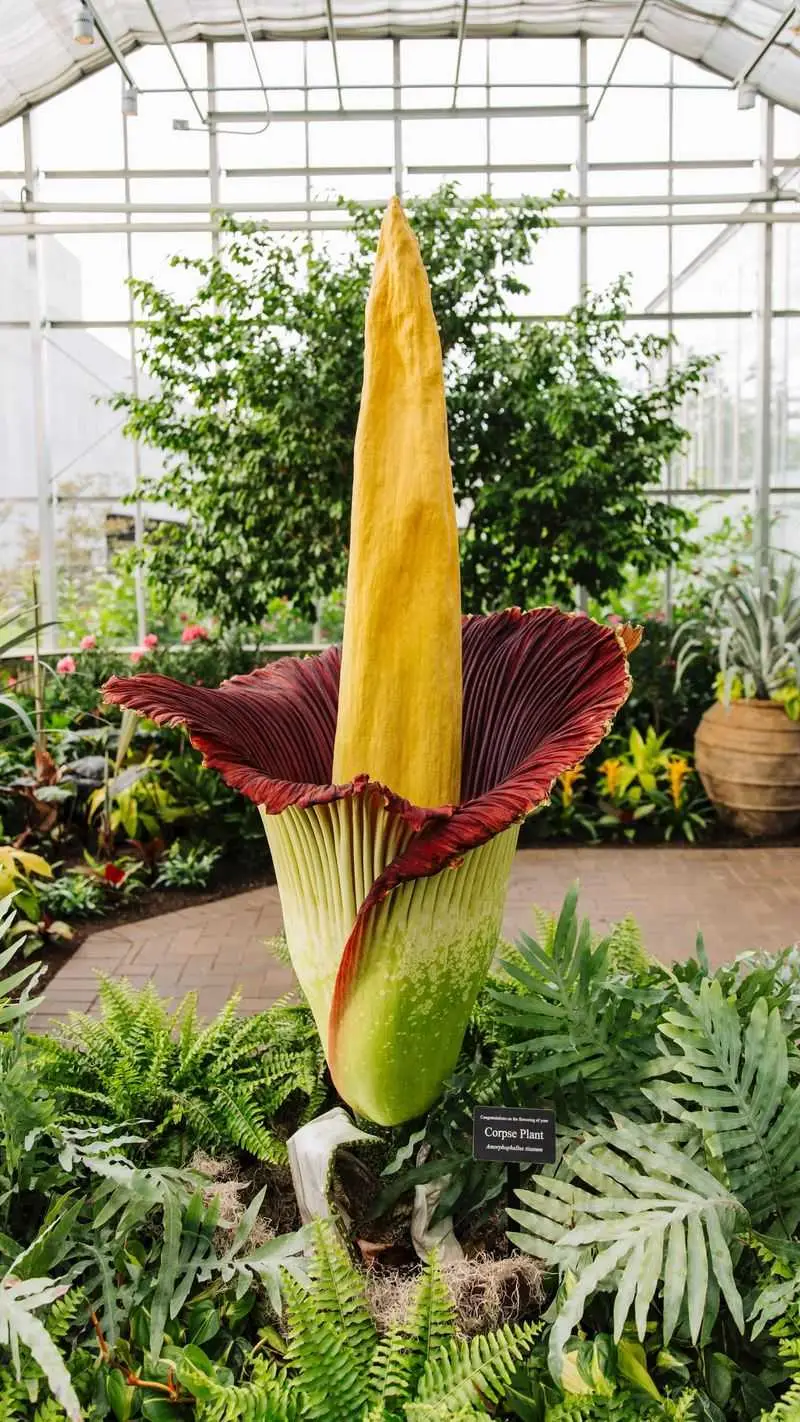
Known for its formidable stench, the Corpse Flower’s bloom is a botanical spectacle. Towering up to ten feet, its deep burgundy petals unfurl to reveal a bloom that lasts merely 24 hours. Despite its unpleasant odor, this rare flower attracts pollinators like carrion beetles and flies.
Native to the rainforests of Sumatra, the Corpse Flower’s blooming event is unpredictable, drawing plant enthusiasts from around the globe.
Its sheer size and the rarity of its bloom make the Corpse Flower a fascinating subject of study, showcasing nature’s complexity and wonder.
Dragon Arum
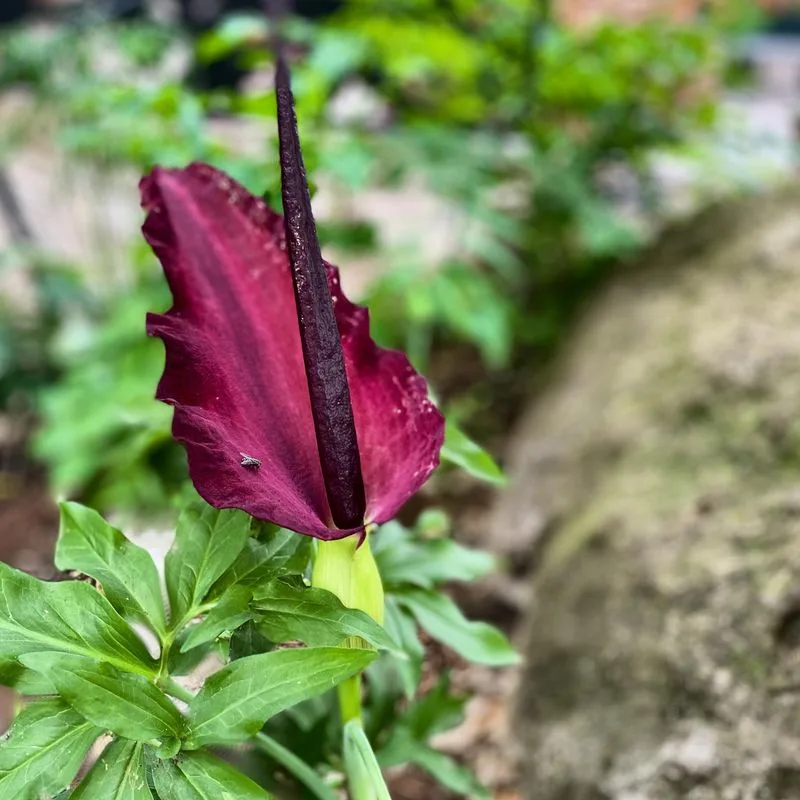
The Dragon Arum intrigues with its striking appearance and pungent scent, drawing comparisons to mythical dragons. Its deep maroon, lacy petals wrap around a dark spadix, creating a bold visual statement. Blooming for just a single day, this flower is a spectacle of nature’s dramatic flair.
Native to the Mediterranean, its aroma, resembling rotting flesh, attracts pollinators like flies.
The Dragon Arum is both captivating and repelling, a true paradox of the floral world, leaving a lasting impression with its extraordinary display.
Tropical Water Lily
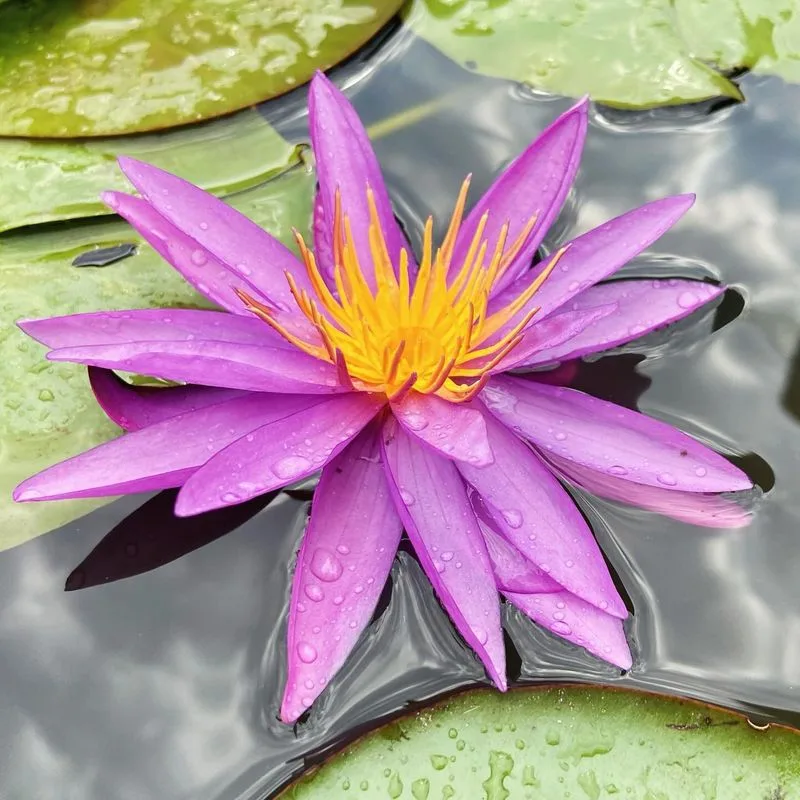
The Tropical Water Lily graces ponds with its stunning blooms, revealing its beauty only during the day. Each flower opens in the morning and closes by late afternoon, a serene cycle that enchants garden enthusiasts.
With vibrant hues ranging from blue to purple, these lilies create a colorful spectacle on the water’s surface. The fragrant blooms attract bees and butterflies, contributing to a bustling aquatic ecosystem.
A symbol of purity and enlightenment, the Tropical Water Lily transforms any water garden into a peaceful oasis, captivating onlookers with its daily ritual.
Ephemeral Starflower
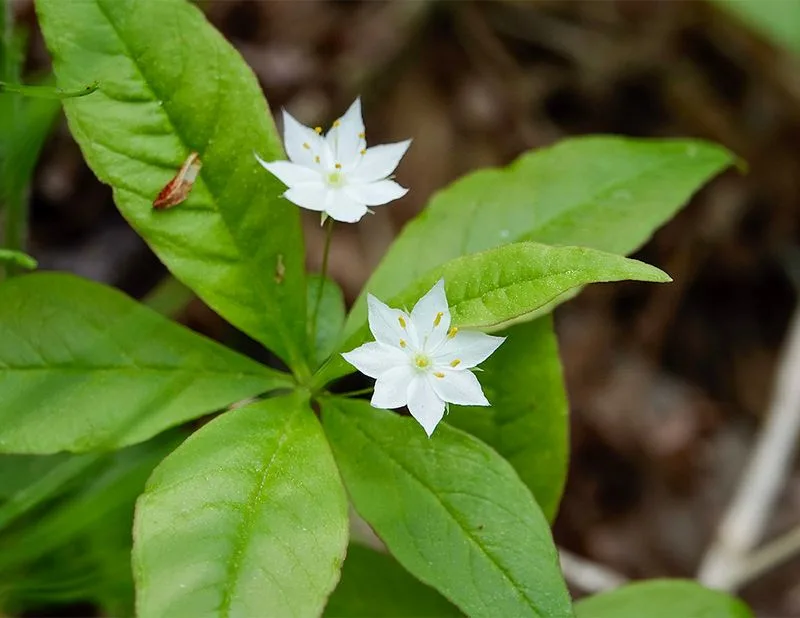
Ephemeral Starflowers light up the forest floor with their delicate, star-shaped blooms. Lasting only a few hours, these flowers create a fleeting yet magical display that resembles twinkling stars scattered across the ground.
They often bloom in spring, thriving in dappled sunlight. Their short-lived beauty is a testament to nature’s transient wonders.
The Starflower’s brief appearance is a cherished sign of spring’s arrival, captivating nature lovers with its celestial charm and the joy of discovery.
Sundew Blossom

The Sundew Blossom adds a touch of elegance to the insect-eating world of carnivorous plants. Its tiny, pink petals open under the warmth of the sun and close by midday, a brief glimpse of beauty within its predatory habitat.
These blooms attract unsuspecting insects, which become trapped by the plant’s sticky leaves. Located in bogs and marshes, Sundews are a remarkable example of nature’s adaptability.
Despite its carnivorous nature, the Sundew Blossom offers a delicate contrast, showcasing the duality of beauty and survival in the plant kingdom.
Blue Passionflower
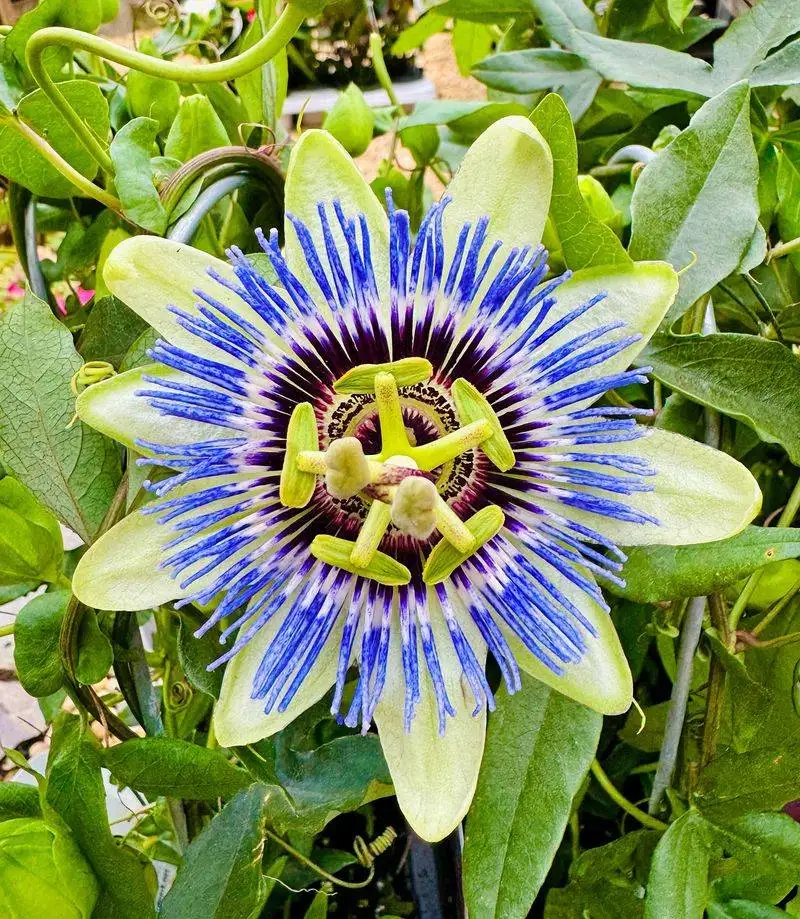
The Blue Passionflower captivates with its intricate design and vibrant colors. Blooming for a single day, its striking blue and white petals form a mesmerizing pattern that draws admiration.
Originating from South America, this climbing vine is treasured for its unique floral architecture. The flower’s brief yet impactful appearance attracts pollinators such as bees and hummingbirds.
Embodying passion and beauty, the Blue Passionflower is a testament to nature’s artistic craftsmanship and the fleeting nature of its most exquisite creations.
Desert Pea
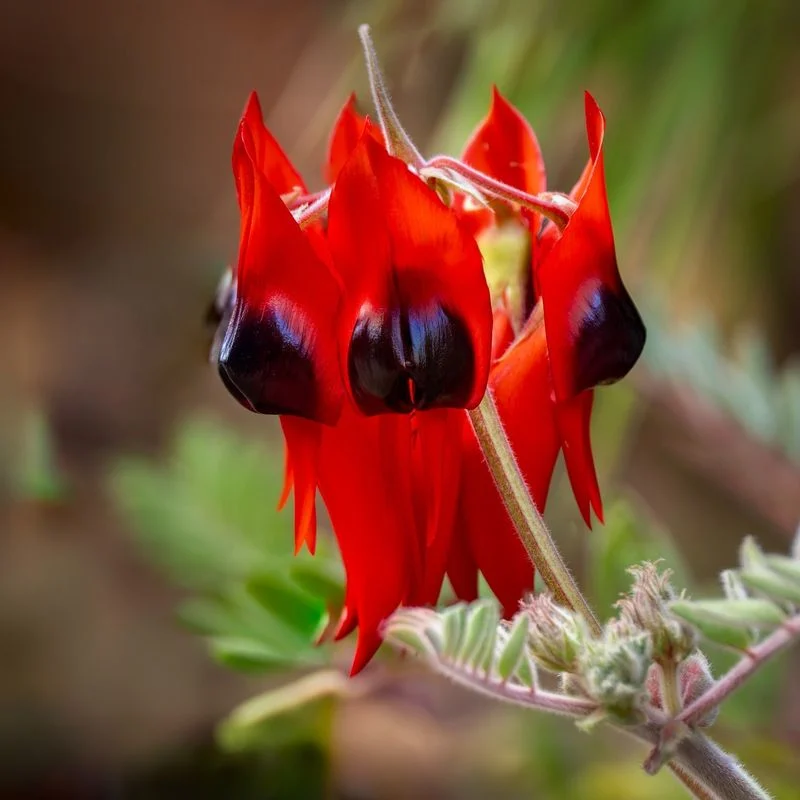
The Desert Pea stands out in the arid landscapes of Australia with its vivid red blooms and distinctive black center. Blooming for only a day, its bold appearance offers a splash of color against the desolate backdrop.
This resilient plant has adapted to survive harsh conditions, thriving in sandy soils and intense sunlight. Despite its tough environment, the Desert Pea’s bloom is a symbol of endurance and beauty.
A favorite among botanists, it represents the vibrant spirit of the outback, captivating those who encounter its brief but brilliant display.

